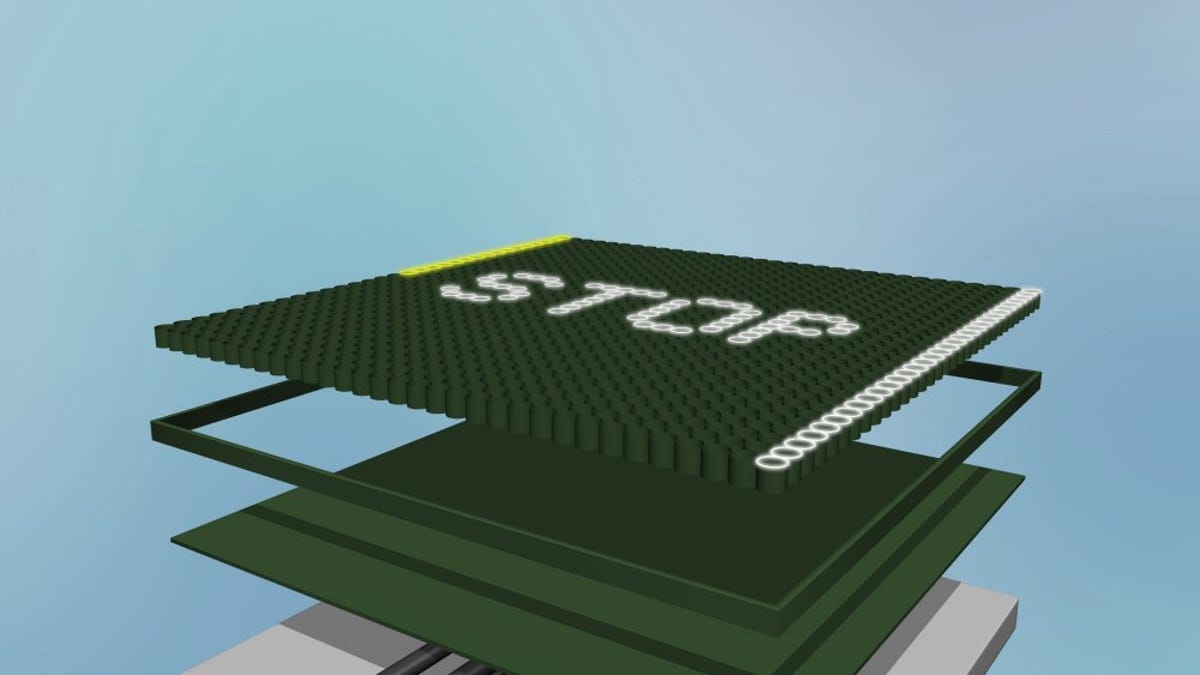Snow-melting road technology in the works
Snow removal technology has made few advancements since the shovel was invented, but engineers on opposite coasts are working on roads that melt snow.

With a multiday, multiregion storm impacting 100 million people over the next couple of days, solar roads that melt snow and ice seem less like a far-fetched pipe dream and more like an obvious investment. Engineers on opposite sides of the country are working to make that happen.
Solar Roadways in Boise, Idaho, received a contract from the Federal Highway Administration to build a solar road panel prototype, which was completed early last year. The 12x12-square-foot road designed by engineer and CEO Scott Brusaw is made out of panels encased in strong and durable glass with the traction of asphalt and that won't cause glare.
Each encased panel generates 7.6 kilowatt hours of electricity per day, and can be connected to smart grids to power homes and business. Wireless LED lights embedded in the glass create road signs and weight-sensitive crosswalks. They also contain heating elements that can melt snow and ice.
The technology to make snow plowing obsolete is similar to what's already used in automobile windshields. Heating elements in the glass melt existing snow or ice and prevent accumulation from developing. By preventing snow-related auto accidents and improving road access for emergency responders, the technology would save a lot of lives.
It could also save cities a lot of money.
As a rule of thumb, snow removal costs about $1 million per inch in New York City each season, and back-to-back snow storms have emptied the city's $38 million snow removal budget. But offsetting the cost of building solar roads by trading in snow plows is a drop in the bucket. It would take more than 10 billion solar panels to cover the more than 3 million miles of roadway and 25,000 square miles of driveways and parking lots in the U.S. At $6,900 a panel, wholesale replacing of old asphalt with new solar road panels is a nonstarter.
And then there's the question of efficacy. Will solar-powered heating elements be able to work through a long winter night? Or what about the ability to work during extended periods of thick cloud cover during storms?
With the prototype completed, Brusaw is working to test his technology in a parking lot or stretch of road in Idaho. But in the future, the former military engineer envisions the world's entire highway infrastructure being made of solar roadways. Roads at night will be powered by energy generated by roads on the other side of the globe where the sun is still shining.
Until then, a cheaper snow-melting road model is also being developed by Rajib Mallick, associate professor of civil and environmental engineering at Worcester Polytechnic Institute. His model heats roads without using photovoltaic panels or cells. Mallick and his colleagues are designing a system of heat-absorbing roadways with embedded pipes filled with freeze-resistant fluid. The fluid is heated in warm weather and stored in insulated chambers. The fluid is sent through the roadway pipes during cold weather. Mallick estimates that it will cost $12,500 for every 164 feet of pipe and should be able to make up for its costs after six months.
Both methods will come much too late to help deal with the current storm blanketing half the U.S. Until these concepts become reality, most drivers will have to rely on the old-fashioned technology of snow plows, shovels, and elbow grease.

